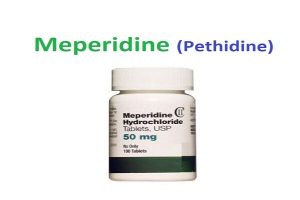
Meperidine, also known as pethidine, is a synthetic opioid pain medication that is used to treat moderate to severe pain. While it can be an effective treatment for pain, meperidine also carries a high risk of addiction and overdose. Here’s what you need to know about Meperidine:
How does meperidine work?
Meperidine works by binding to opioid receptors in the brain and nervous system, blocking the perception of pain. It also has sedative and respiratory depressant effects, which can be dangerous at high doses.
What are the uses of meperidine?
Meperidine is typically used to treat moderate to severe pain, such as pain from surgery, injury, or cancer. It is usually given by injection, but it can also be taken orally in pill or liquid form. Meperidine is not typically used for long-term pain management due to its high risk of addiction and overdose.
Get Your Sample PDF Here:: https://www.alliedmarketresearch.com/request-toc-and-sample/13033
What are the side effects of meperidine?
Like other opioids, meperidine can cause a range of side effects, including:
- Drowsiness and sedation
- Nausea and vomiting
- Constipation
- Dry mouth
- Itching and rash
- Sweating
- Headache
- Dizziness and lightheadedness
At higher doses or with prolonged use, meperidine can also cause more serious side effects, including respiratory depression, seizures, and even coma or death.
What are the risks of meperidine addiction and overdose?
Meperidine is a highly addictive drug, and regular use can lead to physical dependence and withdrawal symptoms when the drug is stopped. The risk of addiction is especially high for people who have a history of substance abuse or addiction.
Meperidine also carries a high risk of overdose, particularly when it is taken in high doses or with other drugs that depress the central nervous system, such as alcohol or benzodiazepines. Symptoms of overdose can include:
- Slow, shallow breathing or difficulty breathing
- Extreme drowsiness or loss of consciousness
- Cold, clammy skin
- Pinpoint pupils
- Bluish lips and skin
- Weak pulse or low blood pressure
What are the alternatives to meperidine for pain management?
Due to the risks of addiction and overdose, meperidine is generally not the first choice for pain management. There are many alternative treatments available for pain, including:
- Non-opioid pain medications, such as acetaminophen and nonsteroidal anti-inflammatory drugs (NSAIDs)
- Physical therapy and other rehabilitation techniques
- Nerve blocks and other pain management procedures
- Alternative therapies, such as acupuncture or massage
In some cases, opioid pain medications may be necessary for the management of severe pain, but they should be used with caution and under the guidance of a healthcare provider.
In conclusion, meperidine is a powerful opioid pain medication that can be effective for the treatment of moderate to severe pain. However, it carries a high risk of addiction and overdose, and there are many alternative treatments available for pain management. If you or someone you know is struggling with addiction to meperidine or other opioids, it’s important to seek help from a healthcare provider or addiction specialist.
Contact Us:
David Correa
USA/Canada (Toll Free): +1-800-792-5285, +1-503-894-6022
help@alliedmarketresearch.com

